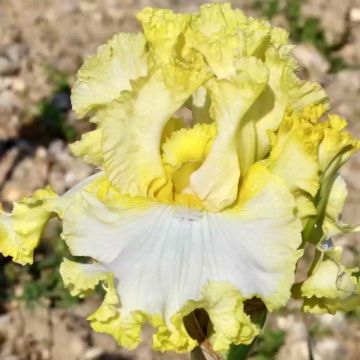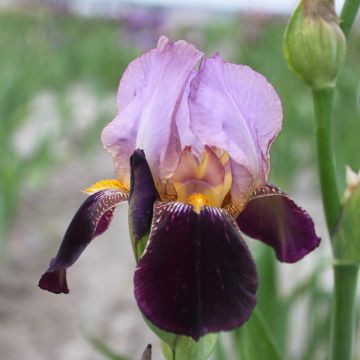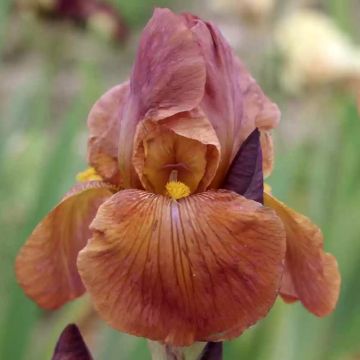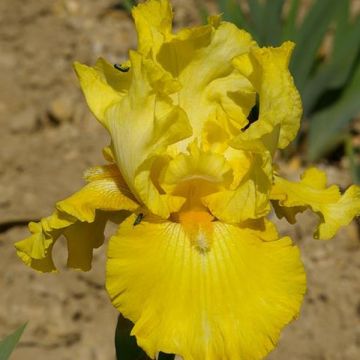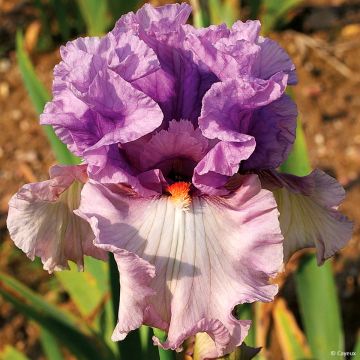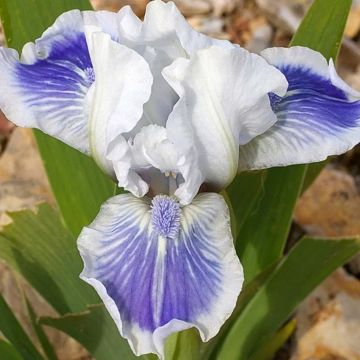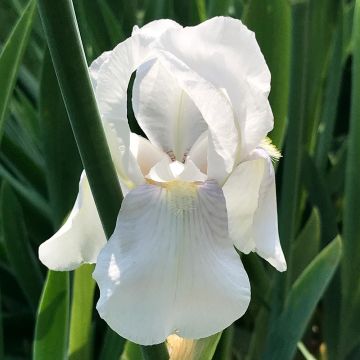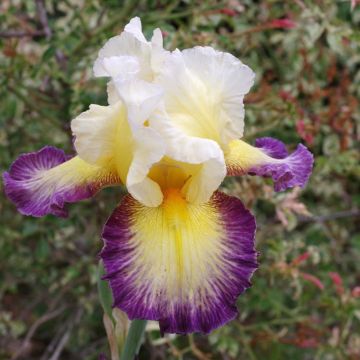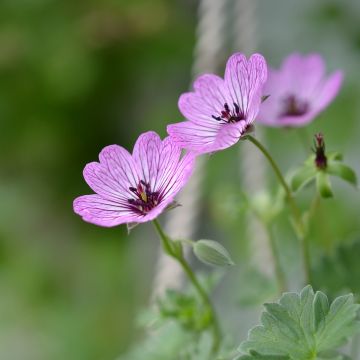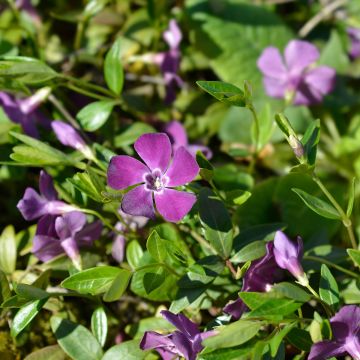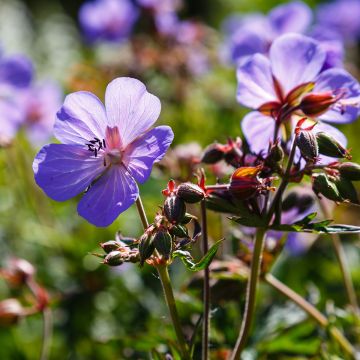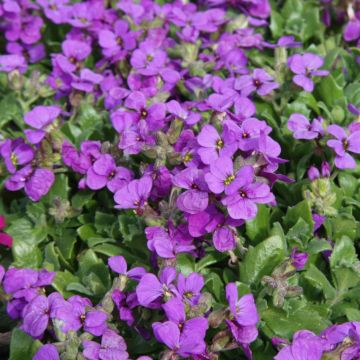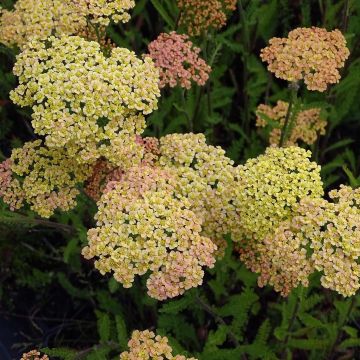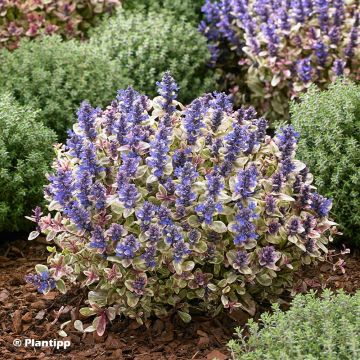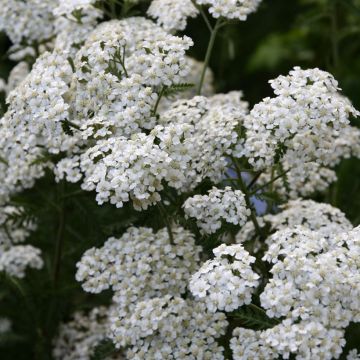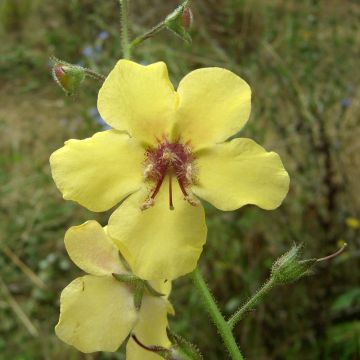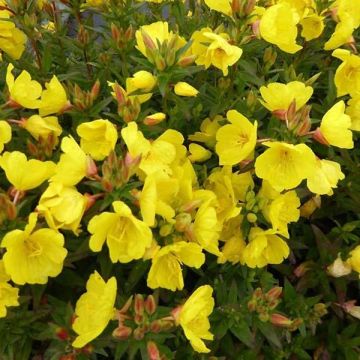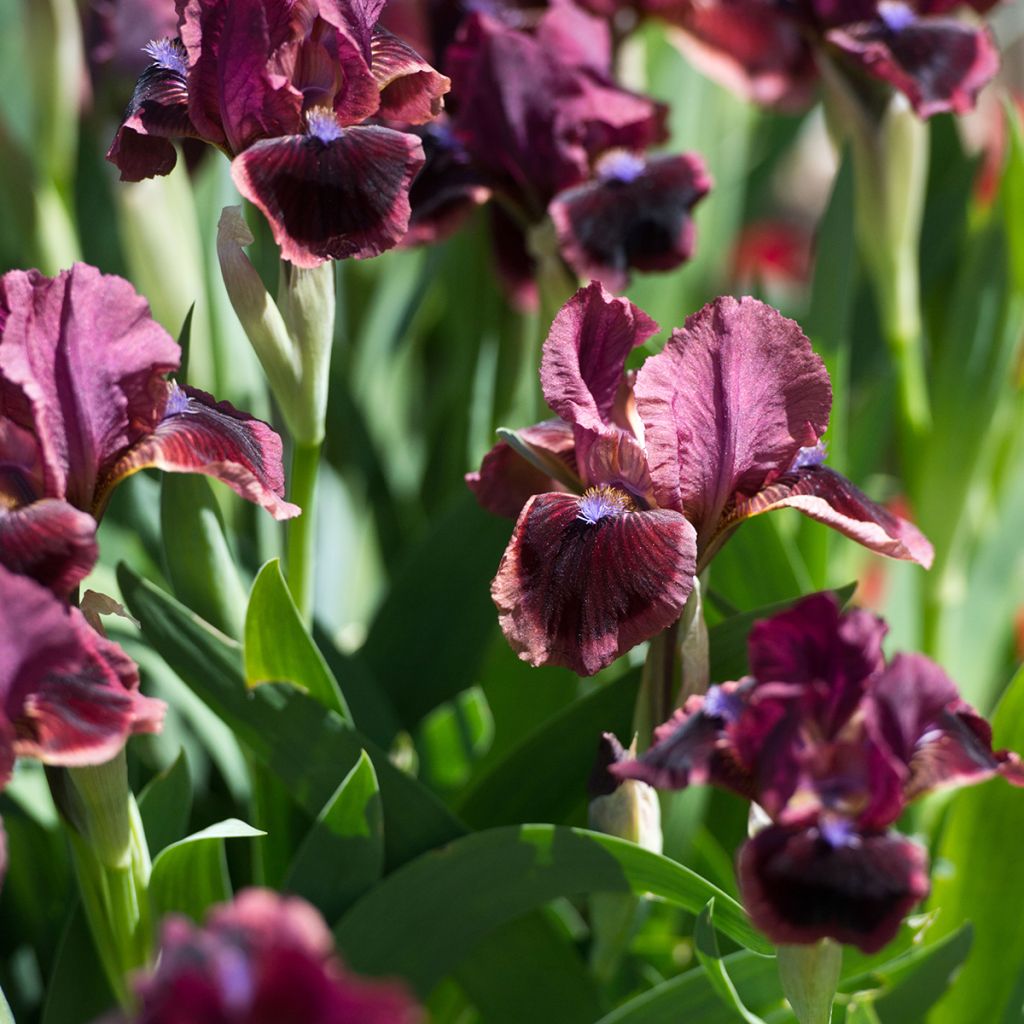

Iris germanica Cats Eye - Bearded Iris
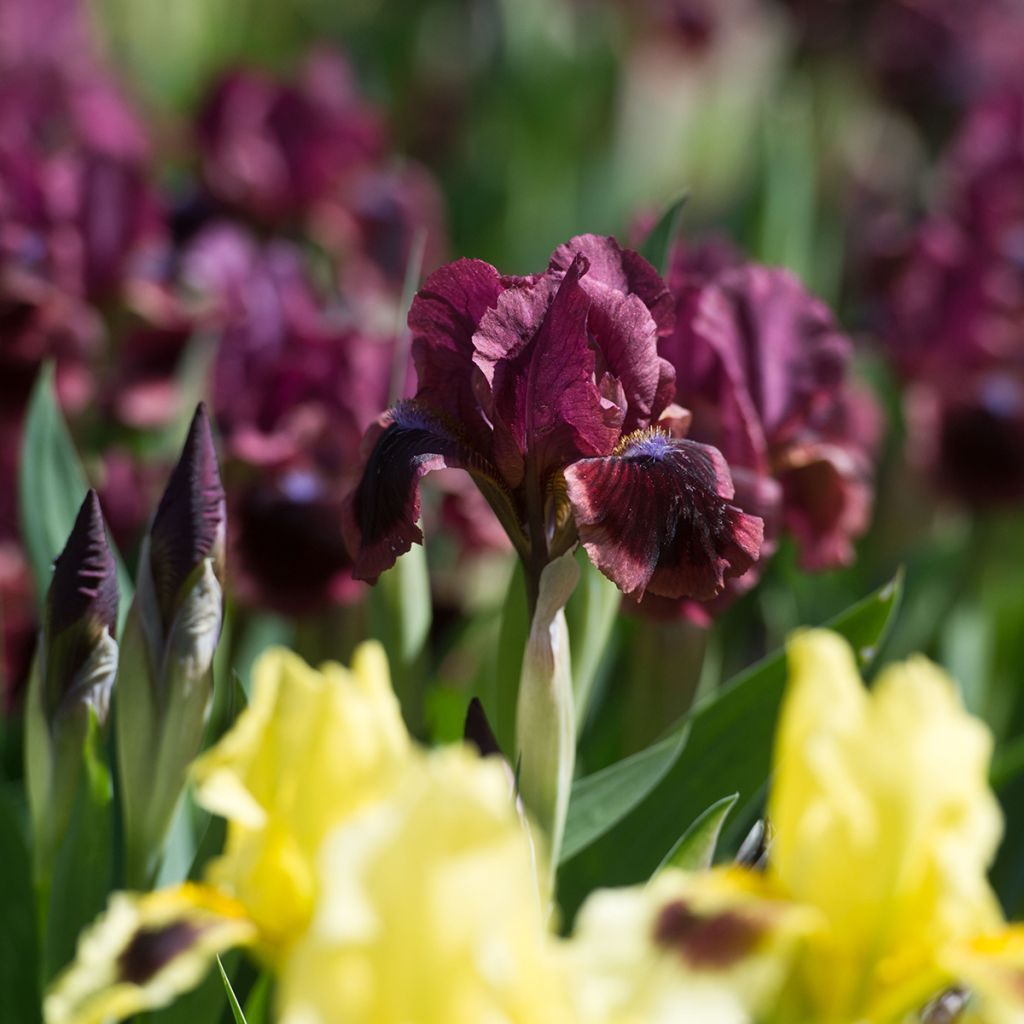

Iris germanica Cats Eye - Bearded Iris
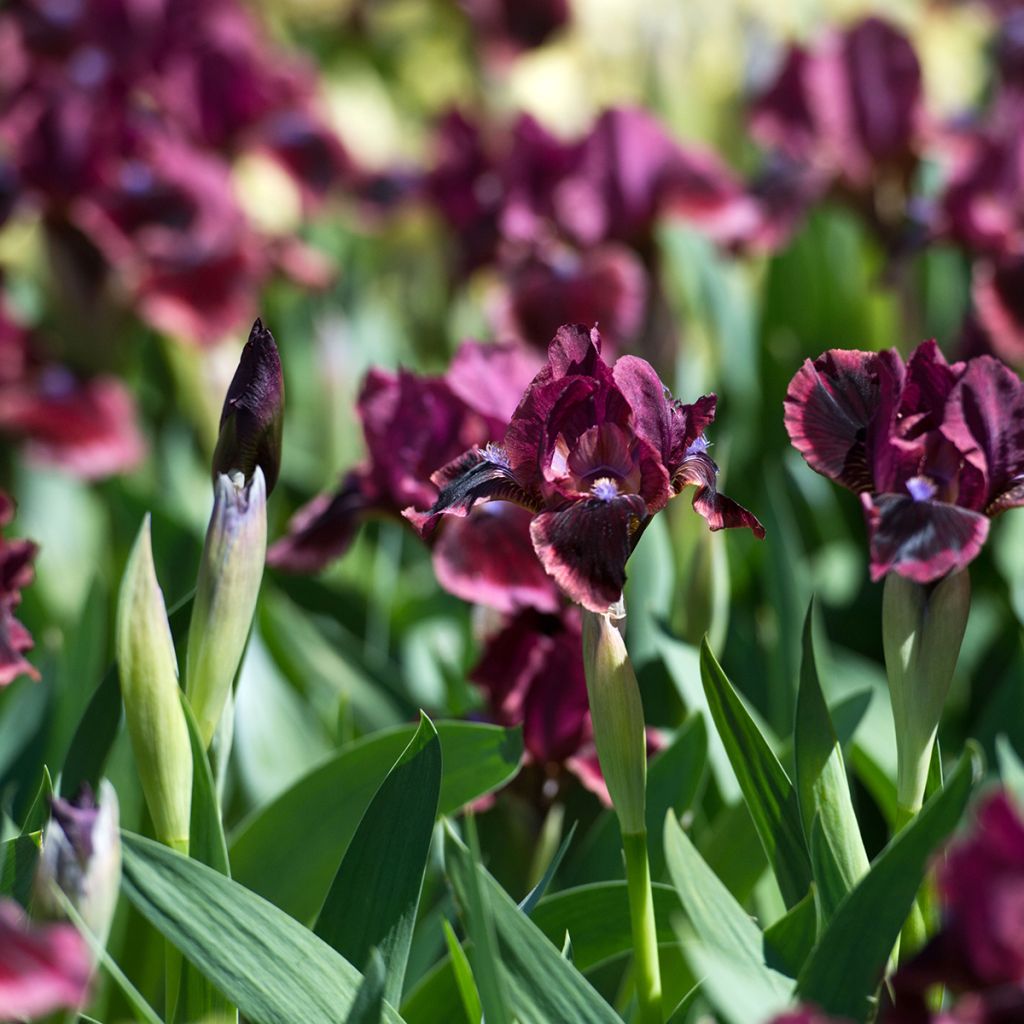

Iris germanica Cats Eye - Bearded Iris
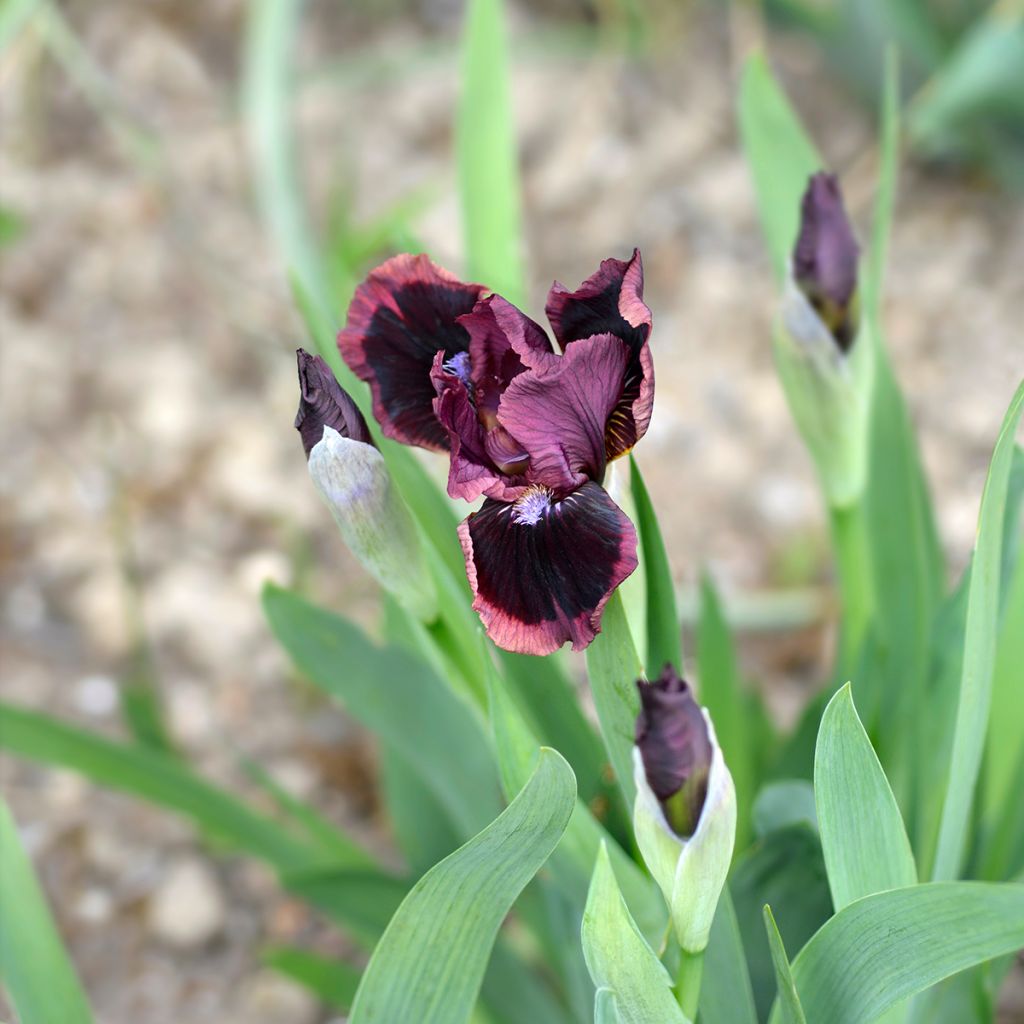

Iris germanica Cats Eye - Bearded Iris
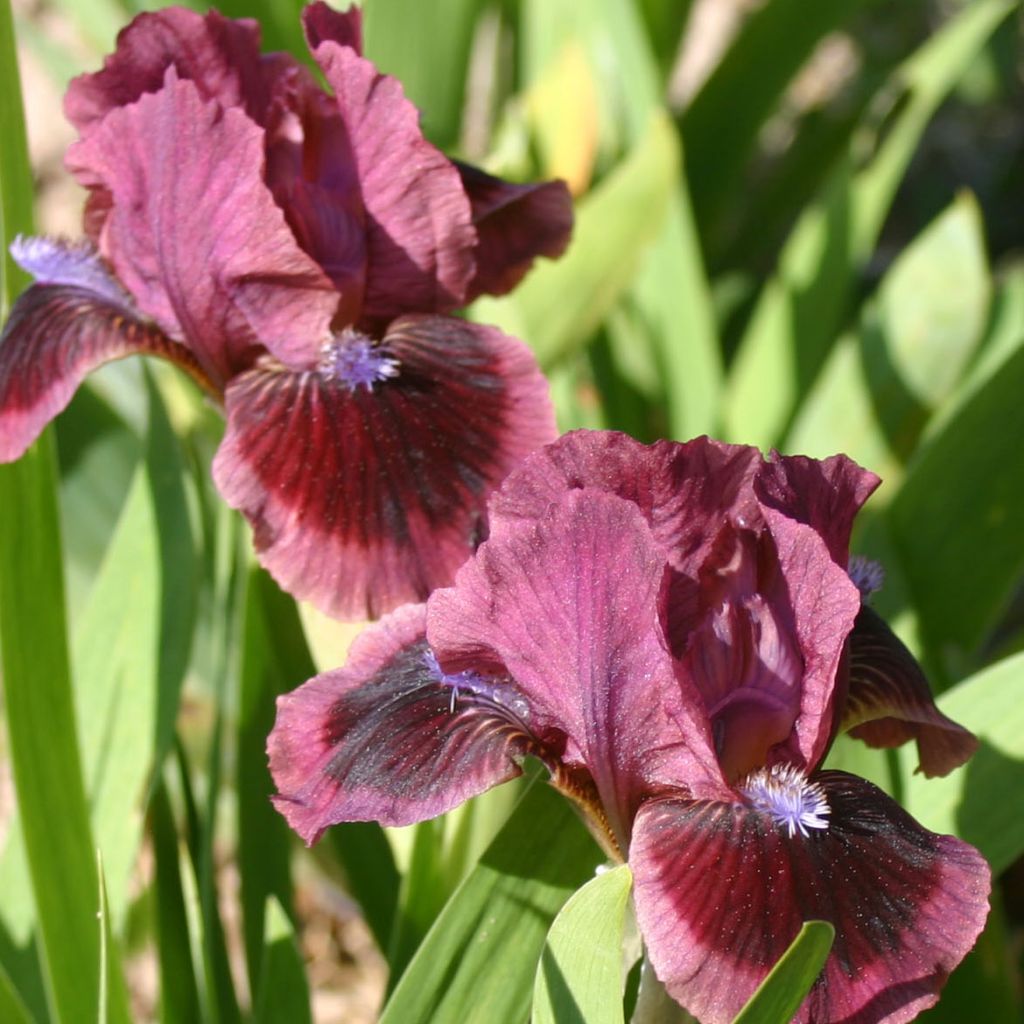

Iris germanica Cats Eye - Bearded Iris
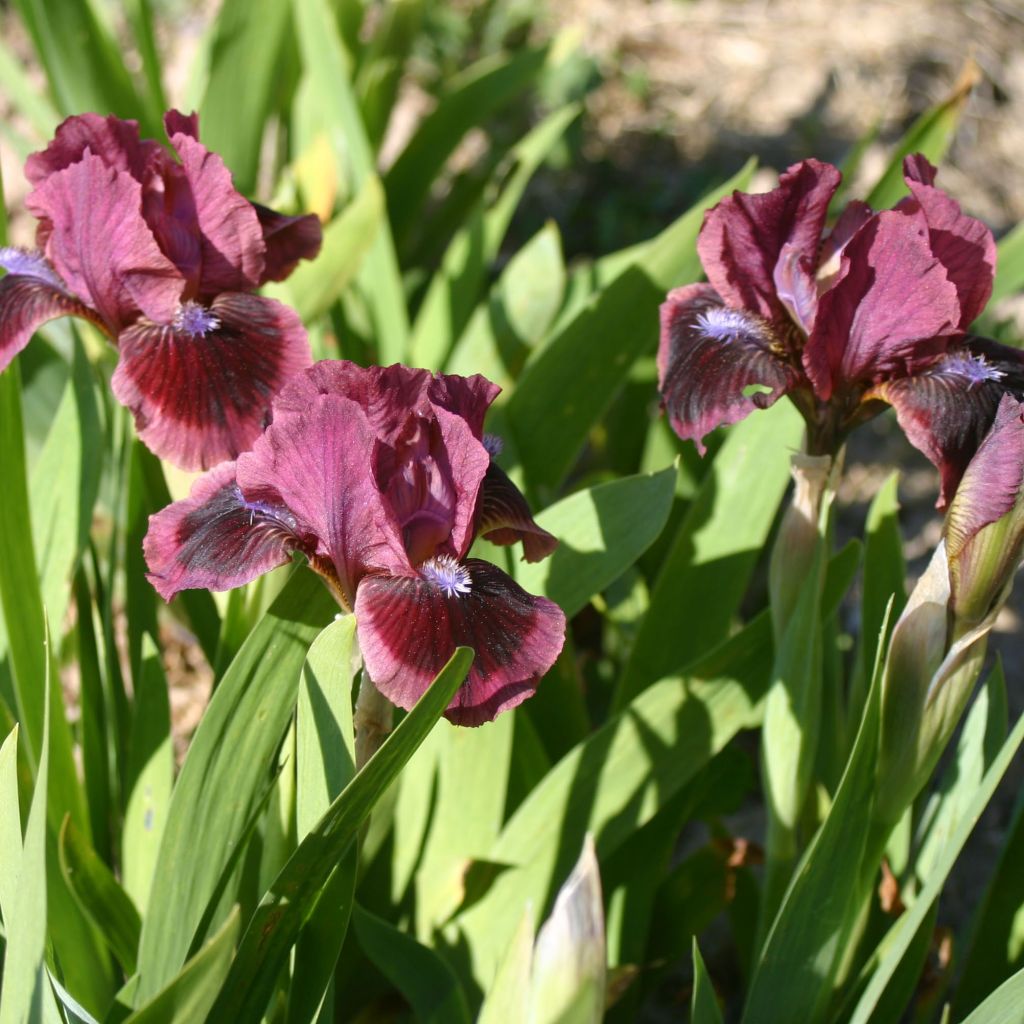

Iris germanica Cats Eye - Bearded Iris
Iris germanica Cats Eye - Bearded Iris
Iris germanica Cat's Eye
German Iris, Bearded Iris
This plant carries a 12 months recovery warranty
More information
We guarantee the quality of our plants for a full growing cycle, and will replace at our expense any plant that fails to recover under normal climatic and planting conditions.
From €5.90 for pickup delivery and €6.90 for home delivery
Express home delivery from €8.90.
From €5.90 for pickup delivery and €6.90 for home delivery
Express home delivery from €8.90.

Does this plant fit my garden?
Set up your Plantfit profile →
Description
Iris germanica 'Cat's Eye', also known as the Iris Lilliput, is a sumptuous variety with a surprising spicy fragrance. It offers early season flowers in various shades of pink: its dark pink petals dominate petals that are widely shaded with burgundy, sometimes almost black, bordered with mauve pink. The lavender blue beards, clearly visible, create a beautiful contrast with the richness of the pink and red petals tattooed with dark veins. Its development is quite significant for a rock garden iris and it quickly forms a lovely spring decoration in borders and on slopes.
The 'Cat's Eye' Iris is a truly attractive variety, having won several awards. It is a rhizomatous and deciduous perennial plant, with an upright tufted habit from spring onwards. It belongs to the Iridaceae family. It is one of the many modest-sized cultivars that appeared in the 1950s. Originally, the 'lilliput' category referred to the cross-breeding of an Iris pumila and a tall iris. This term now generally refers to the category of standard dwarf bearded (SDB) Irises. 'Cat's Eye' will still reach a height of 35cm (14in) when in flower, with numerous buds, and the clump will spread indefinitely over time, with the central rhizomes thinning out in favour of the outer rhizomes. It has a dense tufted habit. The foliage consists of long sword-shaped leaves, glaucous green and highly veined. In March, floral stems appear which will give flowers from the beginning of April, opening from the top towards the lower branches. The color of this plant is, as always with garden Irises, magnified by the texture of the petals and sepals. Note that the flowers exhale an intoxicating fragrance, both spicy and sweet.
Mixed border: the whole range of sizes can be used, to be chosen according to the position (front, back) and the size of the surrounding plants.
Report an error about the product description
Iris germanica Cats Eye - Bearded Iris in pictures


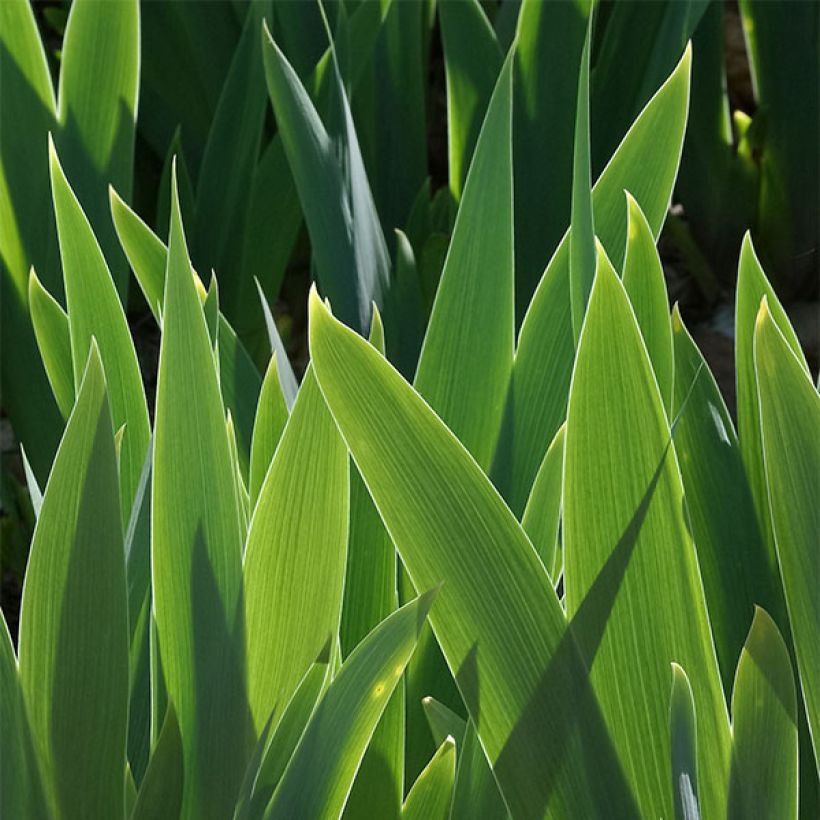



Flowering
Foliage
Plant habit
Botanical data
Iris
germanica
Cat's Eye
Iridaceae
German Iris, Bearded Iris
Cultivar or hybrid
Other German Iris - Bearded Iris
Planting and care
Do you have a sunny, warm and rather dry location in summer?
This is the ideal location for planting irises! In the shade, they vegetate but do not flower. They are grown in all regions. Hardy, they do not need winter protection. Well-drained soil is perfect, even if it is rather dry and chalky. Too much moisture promotes rootstock rot. Plant from July to September. This allows the rootstocks to grow sufficiently before lifting, and to develop new roots before winter. They should be planted as soon as they are purchased for best results. Plan to divide irises every 4 years or so to give them fresh soil. They have strong growth and require space to develop and flower well. They are planted with spacing appropriate to the size and vigour of the variety: about 34-50cm (13-20in) for tall ones (5 to 10 plants per square metre). In a monochrome planting, the rootstocks are planted in a staggered pattern. To create a mix of colours, it is recommended for the overall aesthetics of the iris bed to plant them in groups of several plants of the same variety. Always consider the direction of growth of the rootstocks by arranging them in a star shape, with buds and leaves facing outward, and spacing them well from other varieties to allow them room to develop.
Planting
Dig a hole that is wide and deep enough. Make a conical mound of soil in the hole and place the rootstock and spread out the roots on top. Cover the roots. It is important for the rootstock to be left just above the surface of the soil. It should not be planted in a basin (risk of rot), so anticipate that the soil will settle and the iris will sink. In clay or wet soil, the rootstock should even be left raised on a slight mound of a few centimetres. To make the soil adhere to the roots, the soil is lightly compacted and abundantly watered immediately after planting. Water 2-3 times if necessary until it takes root.
Maintenance:
Keep the soil free of weeds by lightly hoeing, taking care not to damage the rootstocks or roots. Weeds shade the irises, retain moisture (causing rot), and attract slugs. Similarly, remove dry leaves. If they are diseased (reddish-edged spots of heterosporiosis), burn them. Remove faded flowers.
Planting period
Intended location
Care
-
, onOrder confirmed
Reply from on Promesse de fleurs
Spring flowering perennials
Haven't found what you were looking for?
Hardiness is the lowest winter temperature a plant can endure without suffering serious damage or even dying. However, hardiness is affected by location (a sheltered area, such as a patio), protection (winter cover) and soil type (hardiness is improved by well-drained soil).

Photo Sharing Terms & Conditions
In order to encourage gardeners to interact and share their experiences, Promesse de fleurs offers various media enabling content to be uploaded onto its Site - in particular via the ‘Photo sharing’ module.
The User agrees to refrain from:
- Posting any content that is illegal, prejudicial, insulting, racist, inciteful to hatred, revisionist, contrary to public decency, that infringes on privacy or on the privacy rights of third parties, in particular the publicity rights of persons and goods, intellectual property rights, or the right to privacy.
- Submitting content on behalf of a third party;
- Impersonate the identity of a third party and/or publish any personal information about a third party;
In general, the User undertakes to refrain from any unethical behaviour.
All Content (in particular text, comments, files, images, photos, videos, creative works, etc.), which may be subject to property or intellectual property rights, image or other private rights, shall remain the property of the User, subject to the limited rights granted by the terms of the licence granted by Promesse de fleurs as stated below. Users are at liberty to publish or not to publish such Content on the Site, notably via the ‘Photo Sharing’ facility, and accept that this Content shall be made public and freely accessible, notably on the Internet.
Users further acknowledge, undertake to have ,and guarantee that they hold all necessary rights and permissions to publish such material on the Site, in particular with regard to the legislation in force pertaining to any privacy, property, intellectual property, image, or contractual rights, or rights of any other nature. By publishing such Content on the Site, Users acknowledge accepting full liability as publishers of the Content within the meaning of the law, and grant Promesse de fleurs, free of charge, an inclusive, worldwide licence for the said Content for the entire duration of its publication, including all reproduction, representation, up/downloading, displaying, performing, transmission, and storage rights.
Users also grant permission for their name to be linked to the Content and accept that this link may not always be made available.
By engaging in posting material, Users consent to their Content becoming automatically accessible on the Internet, in particular on other sites and/or blogs and/or web pages of the Promesse de fleurs site, including in particular social pages and the Promesse de fleurs catalogue.
Users may secure the removal of entrusted content free of charge by issuing a simple request via our contact form.
The flowering period indicated on our website applies to countries and regions located in USDA zone 8 (France, the United Kingdom, Ireland, the Netherlands, etc.)
It will vary according to where you live:
- In zones 9 to 10 (Italy, Spain, Greece, etc.), flowering will occur about 2 to 4 weeks earlier.
- In zones 6 to 7 (Germany, Poland, Slovenia, and lower mountainous regions), flowering will be delayed by 2 to 3 weeks.
- In zone 5 (Central Europe, Scandinavia), blooming will be delayed by 3 to 5 weeks.
In temperate climates, pruning of spring-flowering shrubs (forsythia, spireas, etc.) should be done just after flowering.
Pruning of summer-flowering shrubs (Indian Lilac, Perovskia, etc.) can be done in winter or spring.
In cold regions as well as with frost-sensitive plants, avoid pruning too early when severe frosts may still occur.
The planting period indicated on our website applies to countries and regions located in USDA zone 8 (France, United Kingdom, Ireland, Netherlands).
It will vary according to where you live:
- In Mediterranean zones (Marseille, Madrid, Milan, etc.), autumn and winter are the best planting periods.
- In continental zones (Strasbourg, Munich, Vienna, etc.), delay planting by 2 to 3 weeks in spring and bring it forward by 2 to 4 weeks in autumn.
- In mountainous regions (the Alps, Pyrenees, Carpathians, etc.), it is best to plant in late spring (May-June) or late summer (August-September).
The harvesting period indicated on our website applies to countries and regions in USDA zone 8 (France, England, Ireland, the Netherlands).
In colder areas (Scandinavia, Poland, Austria...) fruit and vegetable harvests are likely to be delayed by 3-4 weeks.
In warmer areas (Italy, Spain, Greece, etc.), harvesting will probably take place earlier, depending on weather conditions.
The sowing periods indicated on our website apply to countries and regions within USDA Zone 8 (France, UK, Ireland, Netherlands).
In colder areas (Scandinavia, Poland, Austria...), delay any outdoor sowing by 3-4 weeks, or sow under glass.
In warmer climes (Italy, Spain, Greece, etc.), bring outdoor sowing forward by a few weeks.


































